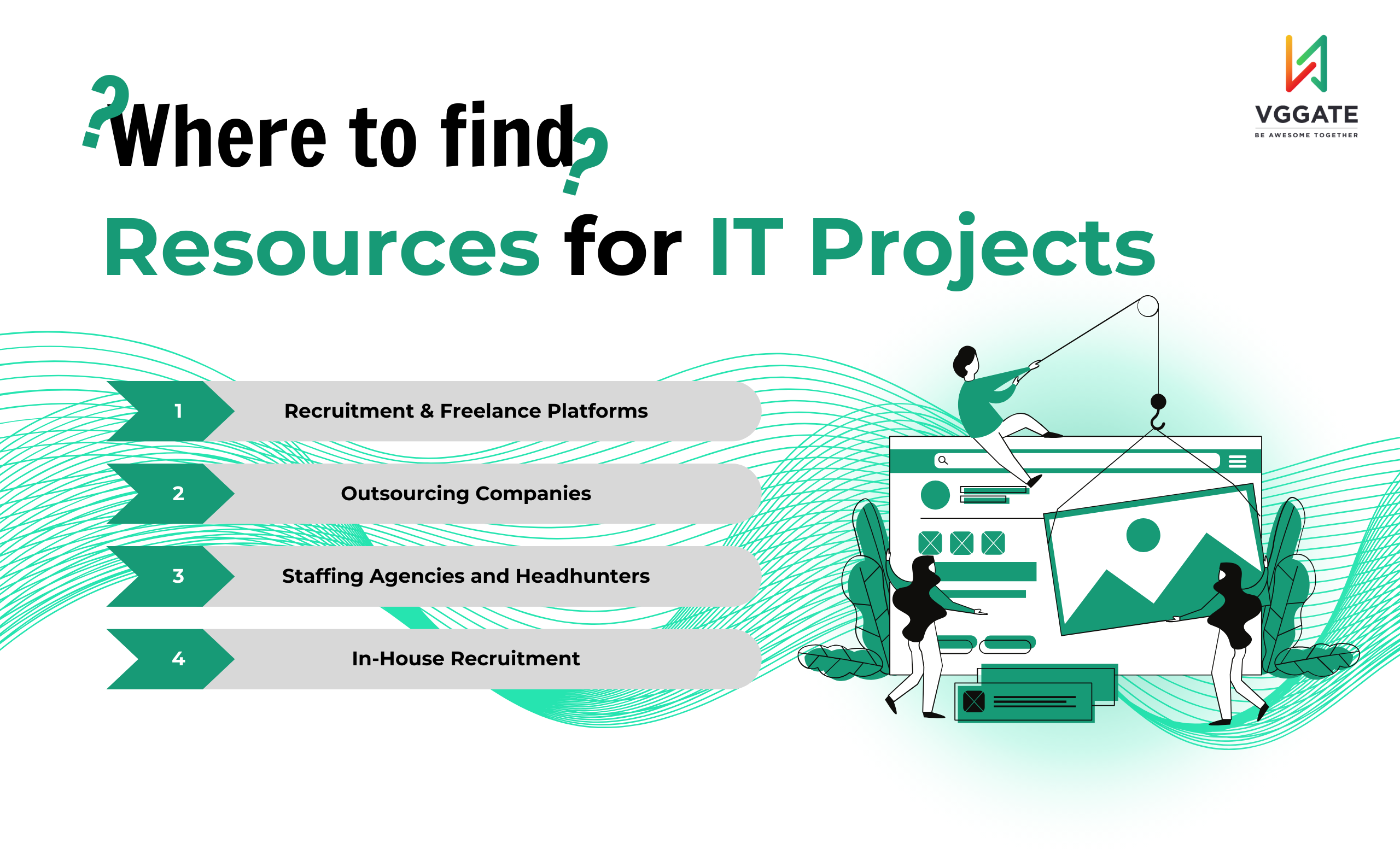In today’s fast-paced tech landscape, finding the right IT talent can be the key to driving innovation and achieving project success. Whether you’re looking for a full-time developer, a short-term freelancer, or an entire outsourced team, understanding the pros and cons of each hiring method can help you make an informed decision. Here, we explore various ways to search for IT talent you can take into account.
1. Recruitment Websites & Freelance Platforms
What is it?
Recruitment websites are online platforms where employers can post job openings and candidates can apply. Freelance platforms connect businesses with freelance professionals who offer services on a project or hourly basis.
Examples: LinkedIn, Indeed, Glassdoor, Monster (recruitment websites); Upwork, Freelancer, Toptal, Fiverr (freelance platforms).
Pros
- Large Pool of Candidates: Recruitment websites and freelance platforms offer access to a vast number of potential IT talents. Advanced filtering options allow you to pinpoint candidates with specific or niche skills.
- Flexibility: These platforms cater to both active and passive job seekers. They also provide the flexibility to hire for short-term or project-based work, making them ideal for fluctuating project demands.
Cons
- High Competition: Attracting top talent can be challenging due to the high competition on these platforms.
- Time-Consuming: Sifting through numerous applications to find the right candidate can extend the process.
- Costs: Premium listings and access to top-tier candidates often come with high costs.
- Turnover Issues: Freelancers, in particular, may have multiple commitments, leading to potential turnover problems.
2. Outsourcing Companies
What is it?
Outsourcing companies are third-party firms that provide specialized services, including IT development, by allocating their own employees to work on clients’ projects.
Pros
- Experienced Teams: Outsourcing companies provide access to experienced and specialized teams, ensuring that your project benefits from high expertise.
- Scalable Resources: These companies can quickly scale resources up or down based on your project needs, offering flexibility and efficiency.
- Reduced Management Burden: Outsourcing can significantly reduce the internal management burden, allowing your team to focus on core business activities.
Cons
- Higher Costs: The services of outsourcing companies are generally more expensive than hiring individual freelancers. However, if you outsource to a market with a favorable exchange rate, you may be able to save on your budget.
- Control Issues: You might have less control over the project and its development process when working with an outsourced team.
- Cultural and Communication Barriers: Working with teams from different cultural backgrounds and time zones can sometimes lead to communication challenges.
3. Staffing Agencies
What is it?
Staffing agencies are firms that specialize in finding and placing candidates in temporary or permanent job positions.
Pros
- Quantity of candidates: Staffing agencies and headhunters provide quick access to a pool of candidates, saving you time in the hiring process.
- Quality of Candidates: These agencies specialize in matching candidates with job requirements, increasing the likelihood of finding a good fit.
- Reduced HR Burden: They handle much of the recruitment process, reducing the burden on your internal HR resources.
Cons
- High Fees: Agency fees can be substantial, adding to the overall hiring cost.
- Variable Quality: The quality of candidates can vary depending on the agency’s reputation and expertise.
- Control Over Hiring: You might have less direct control over the hiring process, relying on the agency’s judgment and processes.
4. In-House Recruitment
What is it?
In-house recruitment refers to the process of hiring employees directly through the company’s own HR department, rather than using external agencies or platforms.
Pros
- Control Over Hiring: In-house recruitment offers full control over the hiring process, allowing you to tailor it to your specific needs.
- Consistent Culture: Hiring internally helps maintain a consistent company culture, which can be crucial for team cohesion and long-term success.
- Potential Cost Savings: While the initial costs may be high, in-house recruitment can be more cost-effective in the long run due to lower turnover and reduced dependency on external services.
Cons
- Resource-Intensive: The in-house recruitment process can be time-consuming and requires significant resources.
- Dedicated HR Team: Successful in-house recruitment necessitates a dedicated HR team, which might not be feasible for smaller companies.
- Limited Reach: Compared to external sources, the reach of in-house recruitment may be limited, potentially missing out on diverse talent pools.
Conclusion
Choosing the right method to source IT talent depends on your specific project needs, budget, and long-term goals. Recruitment websites and freelance platforms offer flexibility and access to a large talent pool but come with challenges like high competition and potential turnover. Outsourcing companies provide specialized expertise and scalability at a higher cost and with less control. Staffing agencies can streamline the hiring process but add significant fees, while in-house recruitment maintains cultural consistency but demands more resources and time.
Balancing these approaches and understanding their unique advantages and drawbacks will help you build a strong, capable team that drives your IT projects to success.



